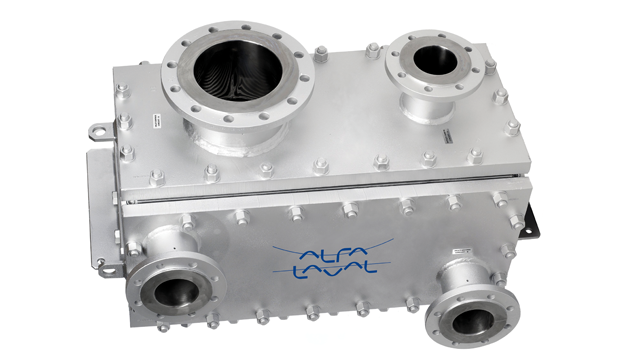Compabloc Free Flow
Alfa Laval Compabloc Free Flow is a highly efficient, fully welded plate heat exchanger, especially developed for use in pharmaceutical applications. It is easy to clean, offers full hygienic properties, exceptional performance, corrosion resistance, and compact size. The result is better product quality and lower operating costs for the customer.
Compact size
Superior heat transfer efficiency in a Compabloc Free Flow makes it possible to reduce the required heat transfer area dramatically compared to an equivalent shell-and-tube or graphite block. This means it can be as small as one-fifth in size compared to a shell-and-tube, and still offer better heat transfer.
The small size is especially valuable if you are planning to increase production but lack space. A Compabloc Free Flow fits anywhere and is easily integrated into your process.
Low costs and long working life
Thanks to the compact size, investment and installation costs for a Compabloc FreeFlow are low, even when the unit is manufactured in highly resistant materials such as Hastelloy.
The robust, fully welded design makes Compabloc Free Flow insensitive to thermal shock and vibrations. It is built for maximum reliability, offers a long working life, and good return on investment.
The high thermal efficiency allows a Compabloc Free Flow to work with a closer temperature approach than a shell-and-tube or graphite block. This makes it possible to use less cooling medium and in some cases a warmer, less costly cooling medium.
Meeting the highest hygienic standards
Compabloc Free Flow has excellent hygienic characteristics. It has no contact points on the product side, is fully drainable, and is easy to clean and inspect. It fully meets the requirements for installation in stringent cGMP processes. The risk of cross-contamination between batches is minimal thanks to the absence of contact points and the crevice-free design, which facilitates fast and thorough cleaning.
Toiminto
Single-pass condenser

This version is suitable when the vapour contains small amounts of inert gases. Vapour enters through the big inlet on the top panel and condenses on the plates. The condensate exits through the sloped, drainable bottom panel.
Two-pass condenser

The two pass version can be used when the vapour contains a larger portion of inert gases. Main condensation takes place in the first pass where the condensable part of the vapour condenses on the plates before exiting through the sloped, drainable bottom panel.
The non-condensable vapours go through the second pass where they are sub-cooled to maximize condensation. Turbulence in the second pass helps to eliminate mist, and vacuum is easily drawn from the outlet of the second pass. With a two-pass condenser there is no need for an additional vapour separator, since separation takes place in the unit.

